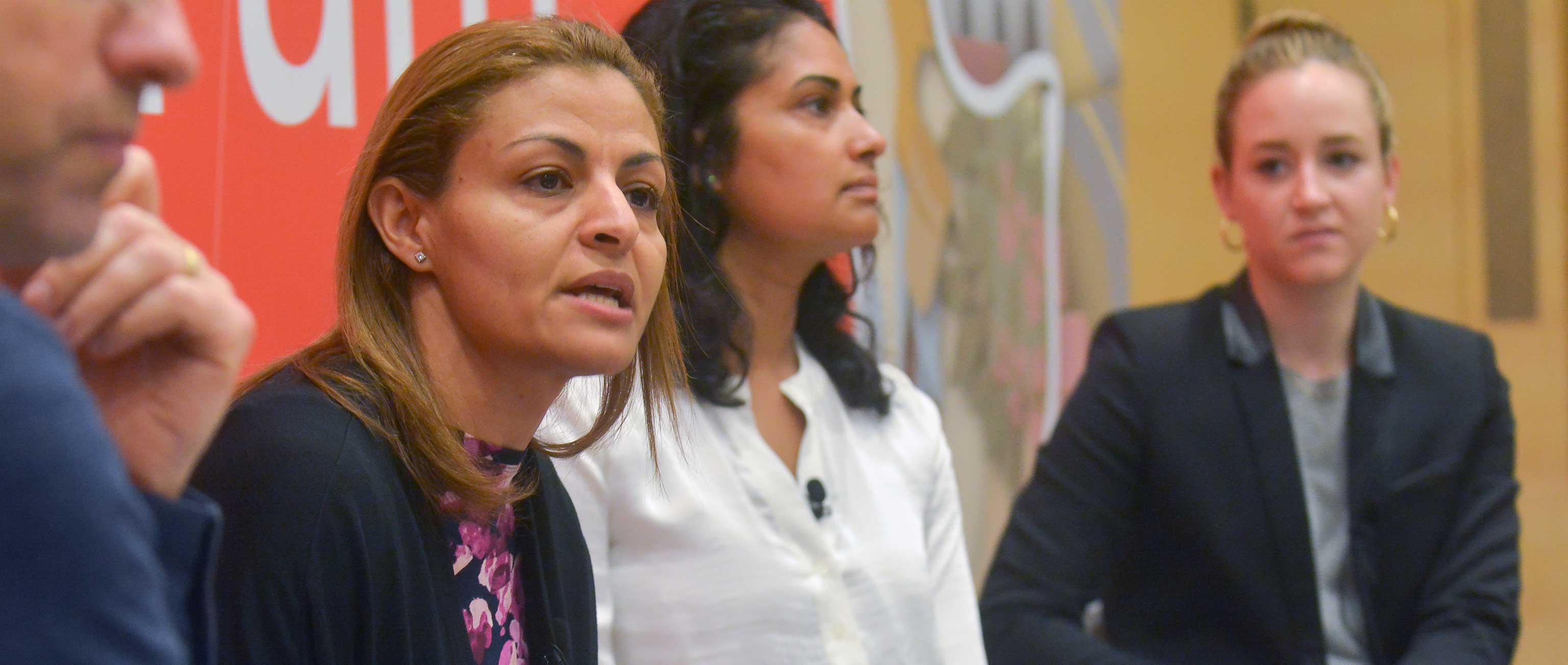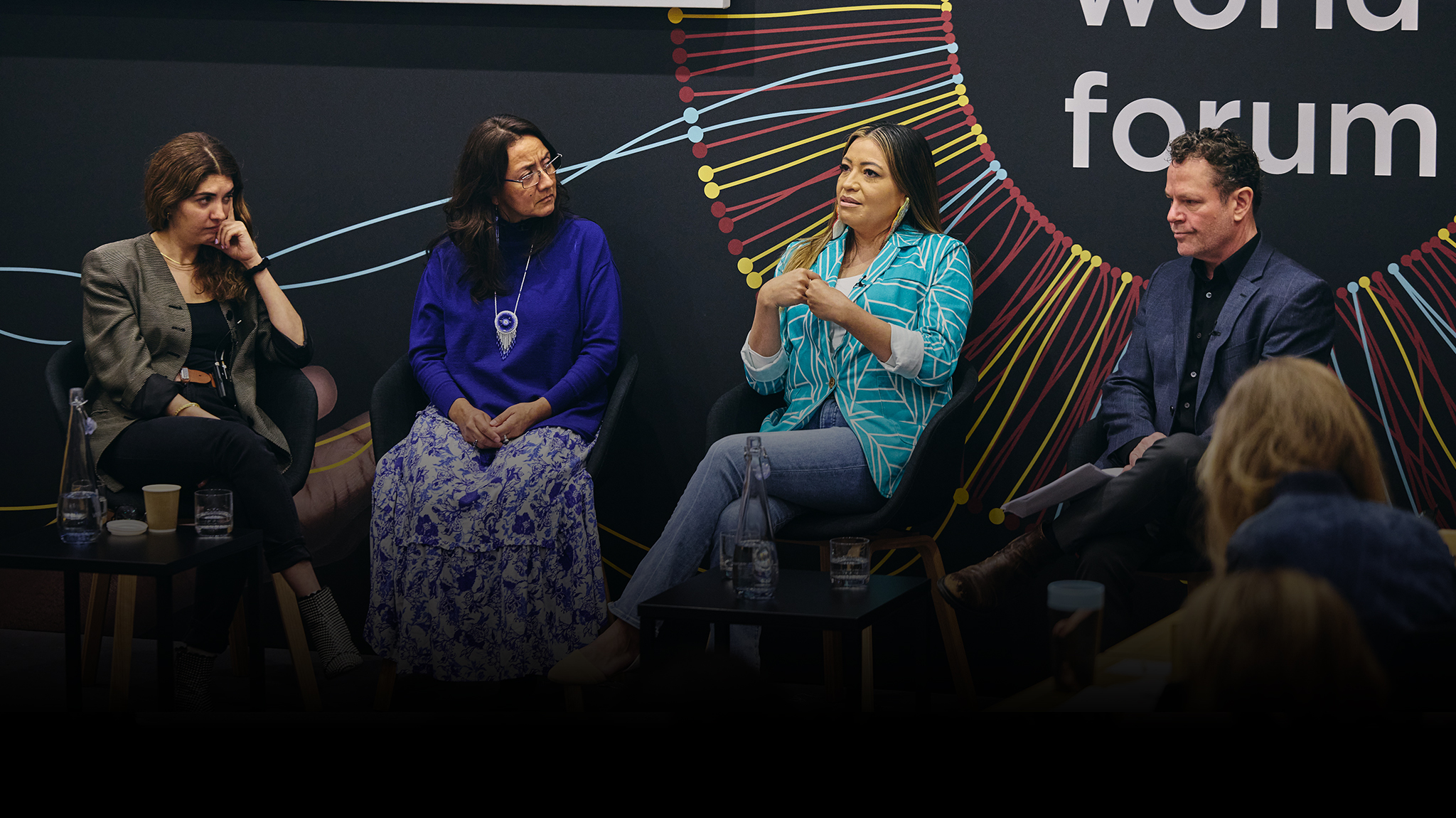Emerging Technologies: Shifting the Path from Poverty to Prosperity?
Neither technology determinists nor tech skeptics would have been wholly satisfied with the Skoll World Forum session, “Emerging Technologies: Shifting the Path from Poverty to Prosperity.” But it was a great day for tech realists, as we heard three interesting and diverse perspectives on the potential opportunities and challenges for tackling key development and social problems with technology. Gargee Gosh, the Director for Development Policy and Finance at the Bill and Melinda Gates Foundation, Maryana Iskander, the CEO of South Africa’s Harambee Youth Employment Accelerator, and Terah Lyons, the Executive Director of the nascent Partnership on Artificial Intelligence, laid out, with the deft moderation of Professor Stefan Dercon of Oxford, both where tech can advance key development objectives, and some pitfalls to avoid.
Arguing that “technology is not destiny,” Terah sought to demystify artificial intelligence. It’s a hot, but frequently misunderstood topic. Key big data companies created The Partnership because they realize the benefits of AI won’t materialize if the challenges aren’t addressed. With over fifty members, split between tech companies and civil society players, the Partnership works at the intersection of commercial and public applications of AI.
AI offers significant opportunities to improve key development challenges: health care; market access; precision agriculture; mitigating environmental destruction; productivity; and more. It also threatens labor market disruption and broader economic dislocation as traditional jobs and industries restructure. The Partnership aims to create a participatory environment for conversations about AI and is working on capacity building in civil society, equipping social sector players with tools to have productive conversations with big tech companies.
In terms of controlling negative potential impacts of AI, Terah said, The Partnership is interested in the full spectrum of potential solutions. Policy or regulation may be the best lever is some cases; in others, the tech industry may be better positioned to arrive at answers. Regardless, development of best practices, accountability, and community building around beneficial AI must be a multi-stakeholder effort, or it won’t succeed.
At the Gates Foundation, Gargee explained, the enthusiasm is not around silver bullet tech breakthroughs, but bundles of technologies. The challenges of poverty and public health are multifactored and need multifactored solutions. In agriculture, Gates is working with the Chinese on new types of seeds, with others on soil research, and still others on deploying new customer information platforms via mobile. Bundle those technologies and you begin to see real potential for systems transformation.
And it’s not just digital technology. The Foundation’s work on reinventing the toilet taps into a range of technologies that aren’t just information processing. It’s really about the entire sewage management process, including the policy environment, cost of management, and more. The Gates Foundation has learned that you need to deeply understand a need before moving to develop a technology. Then you need a great market access strategy for any new product, since policy and finance barriers always emerge. Market intelligence and understanding incentives are keys to success.
Moving to a key development challenge–employment–Maryana described Harambee’s approach to leveraging technology. South Africa has been job deficient for a long time, and the expectation of employment has changed. No one expects a straight-line career anymore. Nor is this just the expectation of job seekers. Employers, too, are concerned what coming waves of automation will mean for their businesses.
Harambee helps young people creatively imagine pathways to employment. It starts from the reality of extremely basic technology. Most of their youth target market have mobile phones, but no data access. So, Harambee has developed creative ways to collect data from these youth via SMS and other techniques. In fact, the organization has more data on unemployed youth than the government. While the data are important, Harambee uses it mostly to validate their assumption and for learning, not for decision making. Their data show some interesting things: for example, bigger households improve employability, but the data can’t explain why. And, of course, if you can’t reach people to ask them about using their data, the data have limited value. Machines have a clear role, but when you need to assess emotive environments, you need people.
Bottom line: rightfully, citizens have high expectations on tech improving lives. But, governments don’t really know what to do with this. Innovative work on deploying and understanding new technologies in civil society can help showcase new solutions and seed ideas that can scale via social and political adoption. We shouldn’t fear new technology, but we can’t look to it as the answer. It certainly can and will be a significant part of the solutions we need to tackle society’s greatest challenges.



